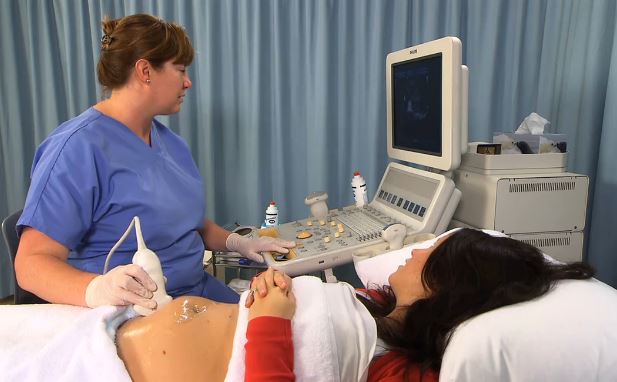

Library > Sonography > Obstetrics > Ultrasound Assessment during the Second and Third Trimesters
Try Simtics for free
Start my free trialUltrasound Assessment during the Second and Third Trimesters

Materials Included:
-

-

-

-

-

Check our pricing plans here
Unlimited streaming.
Obstetric sonography has become an indispensable tool during pregnancy. This module teaches you how to prepare for and perform an ultrasound examination during the second and third trimesters. The interactive simulator provides three different scan scenarios that cover different aspects of the scan protocol. It enables students and practitioners to build or refresh knowledge and cognitive skills, and offers a safe online practice environment so you can prepare for the real clinical world. This module is ideal if you are studying for the American Registry for Diagnostic Medical Sonography (ARDMS) registry exams.
You’ll learn
- to practice, perfect and test your skills in performing an ultrasound scan during the second and third trimesters
- to better visualize and understand the normal feto-placental anatomy during the second and third trimesters, with our 3D model and illustrations
- methods for calculating gestational age during the second and third trimesters of pregnancy
- how to use ultrasound to assess fetal lie, life, number, presentation and situs
- how to scan the maternal uterus and adnexae, amniotic fluid and placental location
- how to assess fetal biometry and scan fetal anatomy relevant to gestational age
- the advantages of 3D/4D imaging compared with those of conventional 2D imaging
- much more (see “content details” for more specific information).
- Identify on diagrams and sonograms normal fetal anatomy of the second and third trimesters.
- Describe and demonstrate gestational age assessment in the second and third trimesters, including multiple pregnancies.
- Describe fetal presentation and position.
- Identify on diagrams and sonograms normal feto-placental anatomy of the second and third trimesters.
- Compare and contrast the advantages of 3D/4D imaging with those of conventional 2D imaging.
- Follow relevant protocols when scanning.
- Define and use related medical terminology.
- Explain the Patient Privacy Rule (HIPAA) and Patient Safety Act.
The SIMTICS modules are all easy to use and web-based. This means they are available at any time as long as the learner has an internet connection. No special hardware or other equipment is required, other than a computer mouse for use in the simulations. Each of the SIMTICS modules covers one specific procedure or topic in detail. Each module contains:
- an online simulation (available in Learn and Test modes)
- descriptive text, which explains exactly how to perform that particular procedure including key terms and hyperlinks to references
- 2D images and a 3D model of applied anatomy for that particular topic
- a step by step video demonstration by an expert
- a quiz
- a personal logbook that keeps track of all the modules the learner has studied and how long
For more details on features and how your students can benefit from our unique system, click here.








